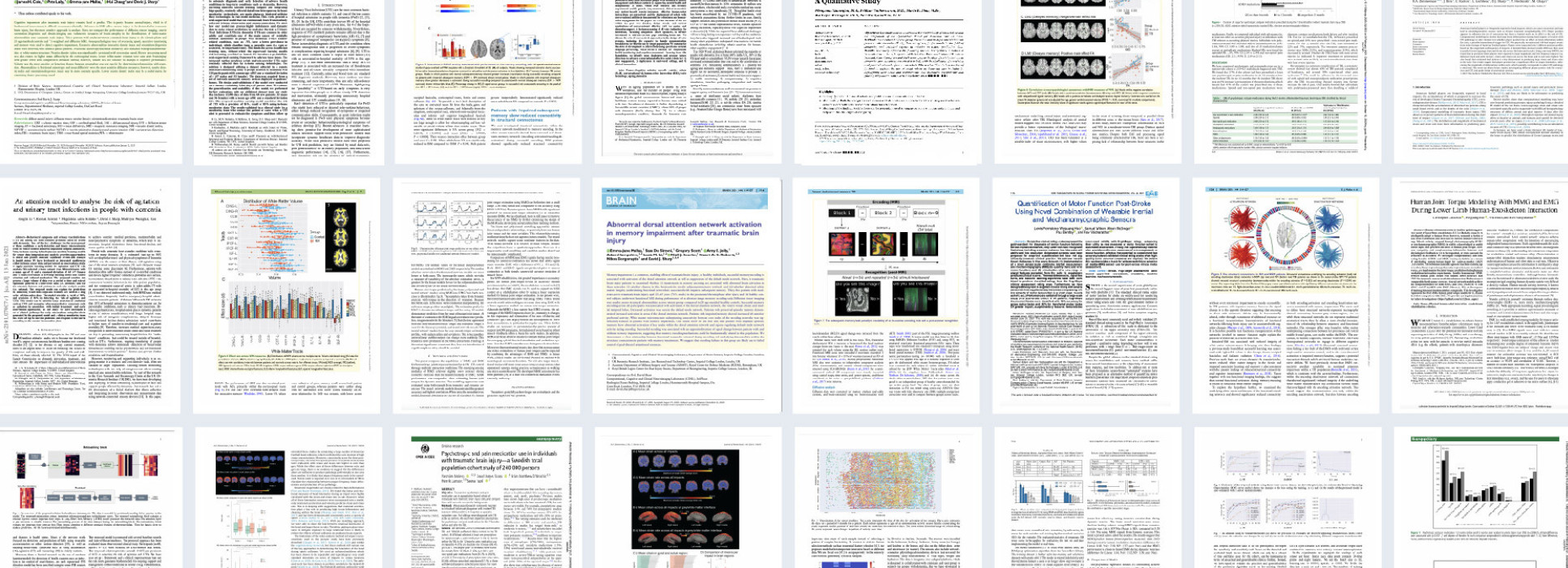
Results
- Showing results for:
- Reset all filters
Search results
-
Journal articleFirouzi F, Farahani B, Daneshmand M, et al., 2021,
Harnessing the power of smart and connected health to tackle COVID-19: IoT, AI, Robotics, and Blockchain for a better world
, IEEE Internet of Things Journal, Vol: 8, Pages: 12826-12846, ISSN: 2327-4662As COVID-19 hounds the world, the common cause of finding a swift solution to manage the pandemic has brought together researchers, institutions, governments, and society at large. The Internet of Things (IoT), Artificial Intelligence (AI) — including Machine Learning (ML) and Big Data analytics — as well as Robotics and Blockchain, are the four decisive areas of technological innovation that have been ingenuity harnessed to fight this pandemic and future ones. While these highly interrelated smart and connected health technologies cannot resolve the pandemic overnight and may not be the only answer to the crisis, they can provide greater insight into the disease and support frontline efforts to prevent and control the pandemic. This paper provides a blend of discussions on the contribution of these digital technologies, propose several complementary and multidisciplinary techniques to combat COVID-19, offer opportunities for more holistic studies, and accelerate knowledge acquisition and scientific discoveries in pandemic research. First, four areas where IoT can contribute are discussed, namely, i) tracking and tracing, ii) Remote Patient Monitoring (RPM) by Wearable IoT (WIoT), iii) Personal Digital Twins (PDT), and iv) real-life use case: ICT/IoT solution in Korea. Second, the role and novel applications of AI are explained, namely: i) diagnosis and prognosis, ii) risk prediction, iii) vaccine and drug development, iv) research dataset, v) early warnings and alerts, vi) social control and fake news detection, and vii) communication and chatbot. Third, the main uses of robotics and drone technology are analyzed, including i) crowd surveillance, ii) public announcements, iii) screening and diagnosis, and iv) essential supply delivery. Finally, we discuss how Distributed Ledger Technologies (DLTs), of which blockchain is a common example, can be combined with other technologies for tackling COVID-19.
-
Journal articleDuckworth H, Sharp DJ, Ghajari M, 2021,
Smoothed particle hydrodynamic modelling of the cerebrospinal fluid for brain biomechanics: accuracy and stability
, International Journal for Numerical Methods in Biomedical Engineering, Vol: 37, ISSN: 1069-8299The Cerebrospinal Fluid (CSF) can undergo shear deformations under head motions. Finite Element (FE) models, which are commonly used to simulate biomechanics of the brain, including traumatic brain injury, employ solid elements to represent the CSF. However, the limited number of elements paired with shear deformations in CSF can decrease the accuracy of their predictions. Large deformation problems can be accurately modelled using the mesh-free Smoothed Particle Hydrodynamics (SPH) method, but there is limited previous work on using this method for modelling the CSF. Here we explored the stability and accuracy of key modelling parameters of an SPH model of the CSF when predicting relative brain/skull displacements in a simulation of an in vivo mild head impact in human. The Moving Least Squares (MLS) SPH formulation and Ogden rubber material model were found to be the most accurate and stable. The strain and strain rate in the brain differed across the SPH and FE models of CSF. The FE mesh anchored the gyri, preventing them from experiencing the level of strains seen in the in vivo brain experiments and predicted by the SPH model. Additionally, SPH showed higher levels of strains in the sulci compared to the FE model. However, tensile instability was found to be a key challenge of the SPH method, which needs to be addressed in future. Our study provides a detailed investigation of the use of SPH and shows its potential for improving the accuracy of computational models of brain biomechanics.
-
Journal articleZimmerman K, Kim J, Karton C, et al., 2021,
Player position in American Football influences the magnitude of mechanical strains produced in the location of chronic traumatic encephalopathy pathology: a computational modelling study
, Journal of Biomechanics, Vol: 118, ISSN: 0021-9290American football players are frequently exposed to head impacts, which can cause concussions and may lead to neurodegenerative diseases such as chronic traumatic encephalopathy (CTE). Player position appears to influence the risk of concussion but there is limited work on its effect on the risk of CTE. Computational modelling has shown that large brain deformations during head impacts co-localise with CTE pathology in sulci. Here we test whether player position has an effect on brain deformation within the sulci, a possible biomechanical trigger for CTE. We physically reconstructed 148 head impact events from video footage of American Football games. Players were separated into 3 different position profiles based on the magnitude and frequency of impacts. A detailed finite element model of TBI was then used to predict Green-Lagrange strain and strain rate across the brain and in sulci. Using a one-way ANOVA, we found that in positions where players were exposed to large magnitude and low frequency impacts (e.g. defensive back and wide receiver), strain and strain rate across the brain and in sulci were highest. We also found that rotational head motion is a key determinant in producing large strains and strain rates in the sulci. Our results suggest that player position has a significant effect on impact kinematics, influencing the magnitude of deformations within sulci, which spatially corresponds to where CTE pathology is observed. This work can inform future studies investigating different player-position risks for concussion and CTE and guide design of prevention systems.
-
Journal articleLadhani SN, Chow JY, Atkin S, et al., 2021,
Regular mass screening for SARS-CoV-2 infection in care homes already affected by COVID-19 outbreaks: Implications of false positive test results
, Journal of Infection, Vol: 82, Pages: 299-301, ISSN: 0163-4453 -
Journal articleGraham NSN, Junghans C, McLaren R, et al., 2021,
High rates of SARS-CoV-2 seropositivity in nursing home residents
, Journal of Infection, Vol: 82, Pages: 310-312, ISSN: 0163-4453
This data is extracted from the Web of Science and reproduced under a licence from Thomson Reuters. You may not copy or re-distribute this data in whole or in part without the written consent of the Science business of Thomson Reuters.
Awards
- Finalist: Best Paper - IEEE Transactions on Mechatronics (awarded June 2021)
- Finalist: IEEE Transactions on Mechatronics; 1 of 5 finalists for Best Paper in Journal
- Winner: UK Institute of Mechanical Engineers (IMECHE) Healthcare Technologies Early Career Award (awarded June 2021): Awarded to Maria Lima (UKDRI CR&T PhD candidate)
- Winner: Sony Start-up Acceleration Program (awarded May 2021): Spinout company Serg Tech awarded (1 of 4 companies in all of Europe) a place in Sony corporation start-up boot camp
- “An Extended Complementary Filter for Full-Body MARG Orientation Estimation” (CR&T authors: S Wilson, R Vaidyanathan)

Established in 2017 by its principal funder the Medical Research Council, in partnership with Alzheimer's Society and Alzheimer’s Research UK, The UK Dementia Research Institute (UK DRI) is the UK’s leading biomedical research institute dedicated to neurodegenerative diseases.


